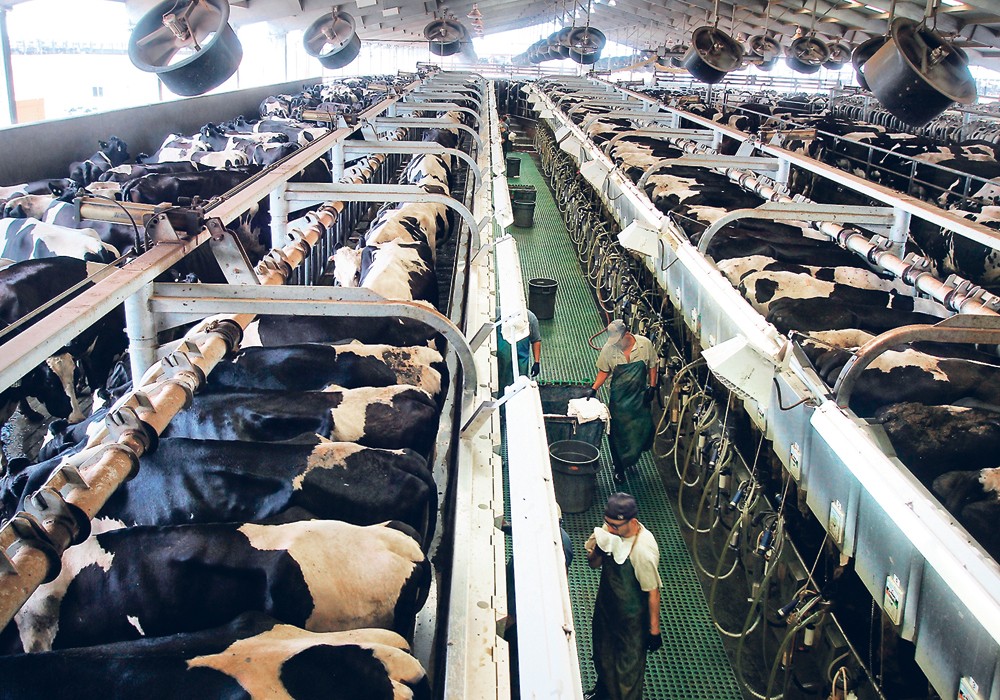
In August 1975, I wrote an article entitled, “How Much More Can Dairy Farmers Endure?” and pointed out the disparity that dairy farmers were paid for their milk as compared to the high prices for items they needed on the farm.
I referred to the old saying: Farmers buy retail and sell wholesale.
This pricing gap was widening. I asked how much longer will dairy farmers be able to withstand this increasing burden. Does that sound familiar?
I attacked the old pricing system called the Minnesota/Wisconsin series price. I pointed out how I felt this pricing system could be manipulated. Later, while I was on the Regional Cooperative Marketing Association board, I urged the organization to investigate the series. I was told the association did not have the funds to do that.
So being a young man, I set out on my own to see what I could uncover.
The main thrust of the series was to determine how much milk was classified as Class B and what the price was. This milk was not to be used for Class I milk for bottling. The Class B milk commanded a much lower price than was used in the national pricing system. I talked to dairy farmers, milk co-op directors, private milk handlers, and various milk truck drivers, among others.
I found that many truckers were picking up both Class B and Class A milk with the same truck and that plant managers allowed Class B and Class A milk to be placed in the same vats. It’s easy to see the extra money handlers could make on this procedure.
As years went on, a small amount of milk was being reported and certainly the series was finally eliminated.
This being the price setter across the nation, all dairy farmers were adversely affected by these procedures. Back in 1975, long before I investigated the series, Eastern Milk Producers abandoned it as the price maker for all dairy farmers. Eastern urged a new economic formula patterned after a New England formula that used the dairy farmers’ cost of production.
In the late part of 1979 to 1980, as president of Eastern, I called a meeting of co-op leaders to be held in State College. Our aim was to raise the support price on dairy products up to 85 percent of parity. Actually, this was accomplished by actions taken by the U.S. secretary of agriculture and Congress. We accomplished what we set out to do.
However, we didn’t listen to Jim Homan, manager of the Interstate Milk cooperative. Jim said: “Boys, you’re going to get the price too high and you will see overproduction.”
This same Congress that took actions to raise the support price between 80 and 85 percent parity and the same Congress that allowed the dairy price support program to go to 80 to 85 percent parity also passed a law to recalculate the price support program to twice a year. Unfortunately, the same Congress froze the support price at $12.60 a cwt. (hundred-weight) and prevented any further upward level of the support price. Before it was frozen, it was set at $13.10 per cwt. by Congress for a few days, and then the new law kicked in and froze it at $12.60.
In subsequent years Congress continued to lower the support price until it reached $9.90 per cwt. and then they abolished the support price completely. Here we are, 44 years later, and those in Washington are still ignoring the plight of family dairy farmers and the need of a new pricing formula.
The sad thing is, thousands of consumers over the years asked, “Why can’t our dairy farmers receive a fair price to give the farmers a chance to survive?”
If Congress felt in 1980 and 1981 that farmers needed a $13.10 support price, what were they thinking when they let it go down to $9.90 and abolished it? The farmers have been misused time and time again. We need to update the Specter-Casey bill, S-1640, and get it reintroduced in Congress. Some of us knew in the 1970s that the pricing mechanism for milk was not correct. Many of us are saying the same thing today. Think of the dairy farmers who have been forced out of business by lack of appropriate action either by the USDA or Congress.
Arden Tewksbury is manager of Pro-Ag.

























